IN THIS ISSUE
- Eagle nest numbers recover
- Meet the southern bee killer
- Where wildlife, learning merge
- Elktoes edging toward extinction
- Sea turtle rescues on Blackbeard, Tybee
- Bluehead chub nests = minnow magnets
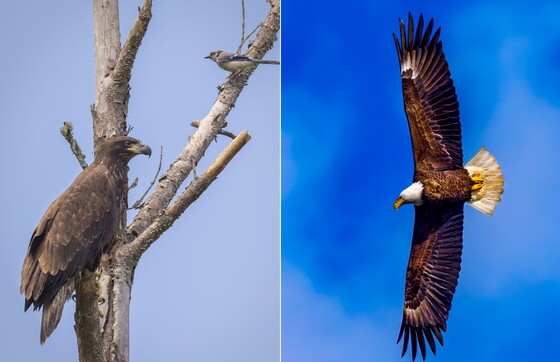 Young bald eagle harassed by a blue jay (left); adult in flight (Becky Cover/DNR; Steve Rushing/GNPA)
Our nation’s bird has again revealed its resilience, with this year’s DNR nesting surveys showing bald eagles recovering in coastal Georgia counties where avian influenza hammered them last spring.
Including all regions checked, the number of nests and young fledged rated above average. Survey leader Dr. Bob Sargent called the findings “excellent,” especially in light of the toll that highly pathogenic avian influenza took nationwide on bald eagles, black vultures and many other bird species last year.
Poor nest results on the coast in 2022 plus a lower than usual nest success rate in southwest Georgia had Sargent worried. Those areas combine for about 85 percent of the state’s known eagle nests.
“The comeback of the bald eagle in Georgia is a great conservation success story," he said, "but the species is listed as threatened in the state and if high nest failures continued they could chip away at population gains. I’m pleased to see the nest success rates rebound this year.”
Although the 2023 survey flights did not cover as much ground compared to the once-every-five-years statewide check in 2022, they still recorded 198 nest territories. Of those, 150 were successful, fledging 232 eagles.
Accounting for nests not monitored, the totals suggest the state has maintained more than 200 nest territories a year since 2015 and the number of nesting eagles is continuing to increase, Sargent said.
NEST NUMBERS/AT A GLANCE
- Occupied bald eagle nest territories: 198
- Successful nests: 150
- Young fledged: 232 (average 1.55 per nest)
- New nests (first time surveyed): 22
- Overall nest success rate: 76%
- More details
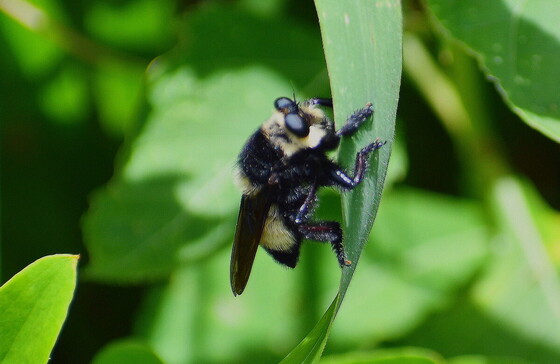 Southern bee killer (Terry W. Johnson)
By TERRY W. JOHNSON
I recently spotted an insect I assumed was a bumblebee perched on a blade of grass. Yet since bumblebees are one of our most industrious insects, it seemed strange this one was not collecting nectar and pollen.
When I leaned over for a closer look, it was obvious this was no bumblebee: It was a southern bee killer.
The southern bee killer (Mallophora orcina) is one of some 1,000 species of robber flies found in North America. Over the years, I have seen a number of robber flies. Most are drab and look like big hunch-backed, long-legged houseflies. All have large eyes that seem to face sideways, and faces covered with bristles. They also share another trait – a sharp, knife-like proboscis.
But the robber fly I found this day was quite different. …
Read Terry’s column for more on the fearsome and remarkable southern bee killer.
Terry W. Johnson is a retired DNR manager and executive director of TERN, friends group of the Wildlife Conservation Section. Check out past columns and his blog. Permission is required to reprint a column.
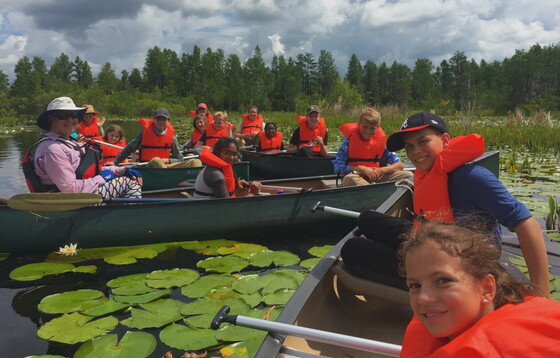 Adventures in Conservation Education campers at Okefenokee NWR (DNR)
By KIM MORRIS-ZARNEKE
Each summer when school lets out, DNR’s Charlie Elliott Wildlife Center and other regional education centers get busy with summer camps for youth ages 6-16.
These camps open the door to a lifetime of adventure and fun through live animal encounters, games, crafts and outdoor recreation. They also connect campers with the DNR Wildlife Resources Division's work to conserve and promote fishing, hunting and wildlife resources through management, education and research.
The opportunities are diverse. Youth can spend a week sharpening their fishing skills while learning about fisheries management or delve into ornithology and learn to identify birds by sight and sound. Other camps educate teens about Georgia ecoregions and their wildlife, emphasize conservation through hands-on activities and field experiences, and explore the variety of careers offered in DNR.
Campers forge friendships and develop outdoor skills, from fishing and canoeing to archery, shooting and wilderness survival. At Charlie Elliott Wildlife Center near Mansfield, summer camp has become a tradition for many youth. Some will repeat camps that really interest them. Others advance through the different camp levels.
Although there are no more openings for summer camp this year, check out the closest education center to you and what each offers, including programs in other seasons. Also mark Feb. 1 on your calendar: That's when registration for next year’s summer camps opens.
Kim Morris-Zarneke is senior program manager of Charlie Elliott Wildlife Center.
 DNR's Camp TALON took this crew on a deep dive into the outdoors, birding and ornithology on the coast in June.
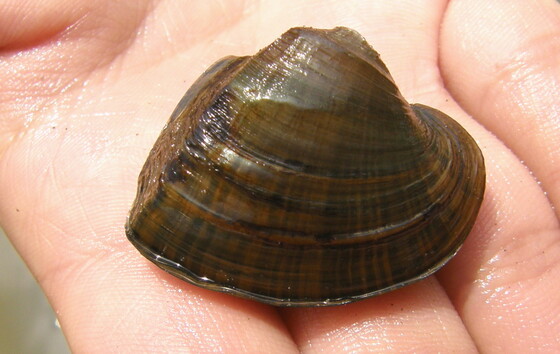 Southern elk toe(DNR)
The southern elktoe is on the edge of extinction. This thin-shelled freshwater mussel known only from the Apalachicola, Chattahoochee and Flint River basin is proposed for listing as endangered under the federal Endangered Species Act.
Matthew Rowe, an aquatic biologist with DNR’s Wildlife Conservation Section, said that while southern elktoes (Alasmidonta triangulata) were historically reported from much of the basin, recent surveys have found them only in a few creeks on the lower Flint and one near Columbus.
“That’s really the only place with a population that’s holding on, that we’re aware of.”
Mussels are bellwethers of water quality. They also help protect those waters and the life they support, from animals and plants to people, by sifting out sediments and pollutants. One mussel can filter about 5-10 gallons of water a day. In a year, that means 10 could filter enough to fill a swimming pool.
As with many mussels in decline, more research is needed to understand why the southern elktoe is disappearing. Rowe said the answer likely involves a combination of factors such as habitat loss and fragmentation, poor water quality, sedimentation, and possibly fewer of the host fish this mussel needs to develop and disperse.
The outlook for southern elktoe isn’t unique. Although Georgia ranks among the top states in freshwater mussel diversity, more than a quarter of the nearly 130 species documented here are considered imperiled to critically imperiled.
One of the southern elktoe’s sister species, Altamaha arcmussel (Alasmidonta arcula), is already part of a candidate conserve agreement to reverse its slide. Another, Ochlockonee arcmussel (Alasmidonta wrightiana), was last collected in the Ochlockonee River in the 1930s and is presumed extinct, Rowe said.
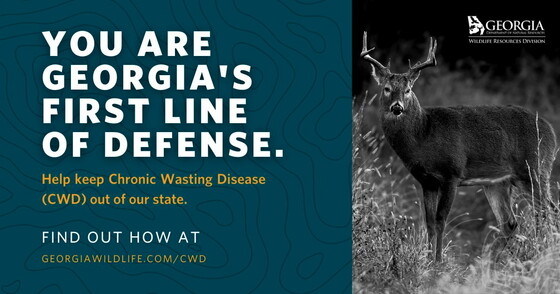 A road-killed deer in Florida’s Panhandle recently tested positive for chronic wasting disease, the first time this contagious killer of deer, elk and moose has been documented in the Sunshine State. CWD has not been detected in Georgia. DNR has protective regulations in place and a confirmed case of the neurological illness – surveillance has been ongoing since 2002 – would trigger a prepared response.
Georgia pet owners with any of six newly regulated reptile species are reminded to have their herps tagged and registered by Dec. 3. After Nile monitors, African helmeted turtles, Chinese softshell turtles, Argentine black and white tegus, and Indian rock and Burmese pythons were added to the state’s wild animal list last year, pet owners were given a 12-month grace period to PIT-tag and register the animals with DNR.
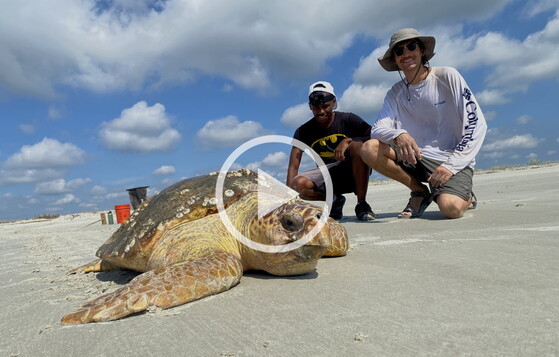 DNR's Matt Goetz, right, and Sapelo's Neo Molopo steer a lost sea turtle toward surf (Mark Dodd/DNR)
An adult loggerhead sea turtle recently found lost in the dunes on Blackbeard Island National Wildlife Refuge was returned to the ocean by DNR sea turtle technician Matt Goetz and Sapelo Island resident Neo Molopo. The exhausted female likely would have died from exposure. Earlier this month at Tybee Island Pier, DNR Law Enforcement’s Maj. Bob Holley and Sgt. Mark Carson helped an angler release a young loggerhead he inadvertently caught. Anglers who hook or entangle a sea turtle should call DNR at 800-2-SAVE-ME (800-272-8363). For more, plus sea turtle-friendly fishing tips.
Sea turtle nesting in Georgia is on pace for 3,100 nests this summer, below last year’s record 4,072 nests but in line with predictions and above the 34-year average of 1,590. State Sea Turtle Program Coordinator Mark Dodd said nesting will begin to slow in late July and hatching season will start soon. Daily updates.
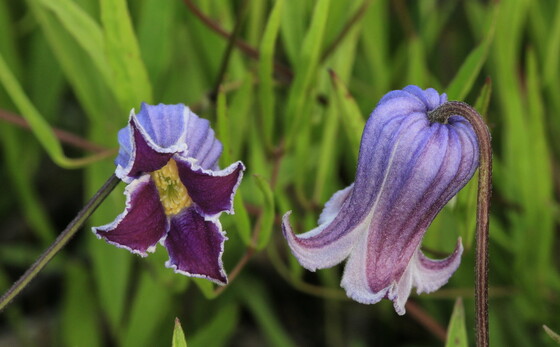 Alabama leatherflower in bloom (Alan Cressler)
A newly installed fence is shielding rare plants in Floyd County from predation and destruction. Deer had been eating species such as endangered Alabama leatherflower (Clematis socialis), Georgia dwarf trillium (Trillium georgianum) and the newly discovered Clematis warei on the Coosa prairies tract.
When it comes to names, the federally threatened frecklebelly madtom (Noturus munitus) has a winner. U.S. Fish and Wildlife Service biologist Craig Springer writes that munitus refers to the small catfish’s fortifications of serrated, venom-packing pectoral spines and "madtom" is possibly linked to the intense sting a prick from the spines brings or the fish's penchant for wriggling furiously. Learn more in this post.
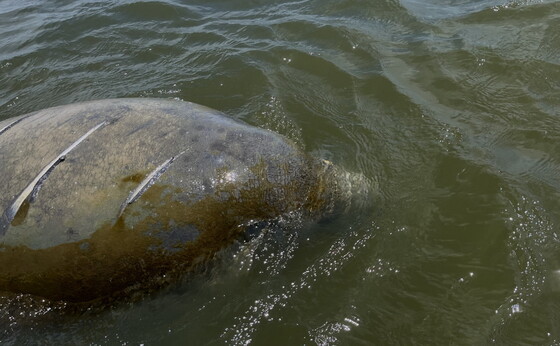 Injured manatee in the East River (Trip Kolkmeyer/DNR; taken under USFWS permit MA37808A-2)
The wounded manatee rescued in Brunswick’s East River last month has died from its injuries, according to Jacksonville Zoo and Gardens. DNR, Florida Fish and Wildlife Conservation Commission and others caught the animal, left “floating like a cork” after a vessel strike ruptured its thoracic cavity, and took it to the zoo, where it was being treated for trauma including a collapsed lung and fractured ribs.
Think you know aquatic nuisance species in Georgia? Test your invasives IQ and get the paperwork to show it using DNR’s free certificate tool.
Quick hits:
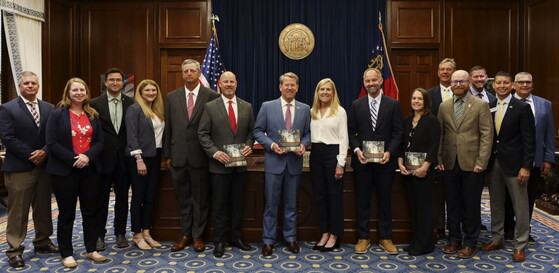 Gov. Brian and First Lady Marty Kemp and DNR leaders honor Forestry for Wildlife Partners (Governor's Office)
Names in the news: DNR’s 2023 Forestry for Wildlife partners were announced last month by Gov. Brian Kemp and agency leaders. Weyerhaeuser, Forest Investment Associates and Georgia Power are part of the program that has promoted sustainable forest and wildlife conservation as part of forest management for a quarter-century. Kemp also approved the DNR Board of Natural Resources’ vote to appoint DNR Deputy Commissioner Walter Rabon as interim commissioner, filling the job left vacant when Mark Williams resigned to join the Jekyll Island Authority. Nick O’Conor landed his first Georgia Bass Slam in 2019 and became hooked: The Dallas, Ga., angler is now fishing for his fifth slam.
 Alyse Eady of Good Day Atlanta interviews DNR's Daniel Sollenberger about snakes
"How to recognize Georgia's venomous snakes," WAGA-TV (ch. 5, Atlanta)
(audio) "This fishing gear can help save whales; will fishermen use it?" NPR
"Bat culvert survey," DNR
"Today in Georgia History: Chattahoochee National Forest," Georgia Public Broadcasting
(audio) "Biomed labs bleed more horseshoe crabs with little accountability," NPR
"Birding camp fledges next generation of scientists," Savannah Morning News
"Rare mussel could be added to endangered list," Georgia Public Broadcasting
"Invasive Asiatic clams dying in the lower Flint," The Albany Herald
"DNR reminds pet owners: Tag, register ‘wild animal’ reptiles," AllonGeorgia
"Over 1,000 pink lady's slipper orchids thrive after relocation," Georgia Public Broadcasting
"Bald eagles rebound in Georgia, despite bird flu threat," Atlanta Journal-Constitution and others including Georgia Recorder, WSAV-TV (ch. 16, Savannah)
"DNR: Watch for symptoms of fatal disease in deer," WSB-TV (ch. 2, Atlanta)
"Federal court sides with lobster fishers in whale case," Associated Press
"Congressman wants to block agency from slowing boats to protect whales," Associated Press
"DNR announces Forestry for Wildlife Partners," Yahoo!news and others
"Georgia's threatened, endangered animals: How to help," The Augusta Chronicle
"Williams retires as DNR commissioner after 13 years," Georgia Outdoor News
"Warnell lab pioneers process that gives chestnuts fighting chance," UGA Research
"Up a climate-stressed creek," U.S. Fish and Wildlife Service
"DNR rescues ducks from storm drain," WSB-TV (ch. 2, Atlanta)
"Snake season: What to do and not to do if you see one," WSB-TV (ch. 2, Atlanta)
"Rabid moose found in Alaska," The Wildlife Society
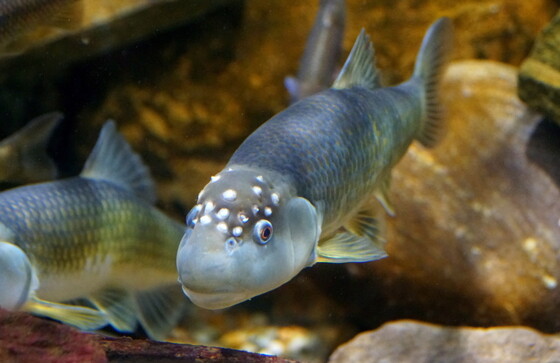 Bluehead chub (Adobe Stock)
Georgia’s rocky creeks are rich in colorful fishes. A streambed cobbled with rocks is great habitat for bluehead chubs, minnows known for building their spawning nests out of gravel and small pebbles. The nests also provide spawning habitat for a variety of other minnows, including yellowfin shiners (watch). These nest-associating species are some of the state's most vibrant-colored fishes. They can be seen even from the bank in late spring to early summer on streams throughout central and north Georgia.
– Ethan Hatchett
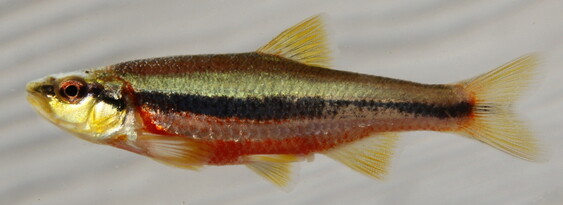 Yellowfin shiner (Brett Albanese/DNR)
Top
|